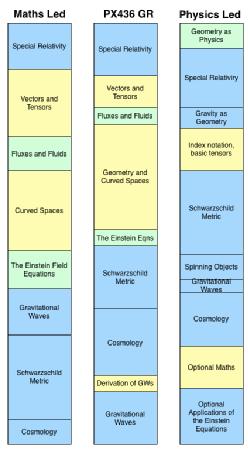Teaching and Learning
Current Teaching Responsibilities:
- PX444 The Distant Universe (7.5 CATS, 4th Year)
- 3rd Year Communicating Science and Group Projects
- 3rd and 4th Year Project Supervision
- 1st and 2nd Year Physics Tutorials - including producing science of sci-fi worksheets
- Graduate Student Supervision:
My current PhD students is Gareth Jones, and I'm also working with postdoc Conor Byrne. My former PhD students are Stephanie Greis and Ashley Chrimes, and I was second supervisor to Greg Brown and Charlotte Angus (who also worked with Andrew Levan)
Teaching Philosophy:
Educating the students in our care is a vital element of professional practice for any university academic. Not only are we training our successors as researchers and educators, we are also engaging with students who will shape society in the wider world, influencing public and political opinion. The majority of students who study Physics at Warwick go on to be ‘business and statistical‘(22%), ‘information and communication technology‘ (14%) or ‘business and finance associate’ (13%) professionals [1]. Ensuring that these individuals leave Warwick with a firm grasp of reasoning and discursive skills, understanding scientific method and how the world works at a physical level is both a responsibility and a privilege.
My objective as an educator is to train students to approach a problem as a physicist, able to articulate the key points of a problem and reason their way towards an appropriate solution or approximation. Also, I aim to teach students the skills, and provide the appropriate level of factual knowledge, that they need to take that physicists’ approach and produce a correct solution. This involves engaging students with the material and putting factual information into contexts where the students understand its wider relevance and point.
In Physics this rarely involves reflective discussion of the information itself, but may involve discussion of its application and scenarios in which it may be applicable or inappropriate. Information technology is important in the context of making lectures clear and accessible, and providing recourse to forums and other mechanisms by which students can ask questions. However students, when questioned individually and indeed surveyed at the start of the 2013-14 course, prefer a traditional blackboard/whiteboard approach. Physics teaching is usually in large lecture groups, supplemented by problems classes. Small group tutorials are only provided in the first two years however these tutorials provide an ideal opportunity to explore current Physics-based news stories, pull together information from different lecture course and put it in a societal context.
Notes on Teaching General Relativity:
Conventional General Relativity courses must first introduce a vast amount of higher level mathematics, and then use this to derive Einstein’s field equations, before going on to explore how those equations describe the Universe and lead to observable consequences. This is described as the “maths‐led” approach. An alternate “physics first” approach in this area argues that exploring the phenomenology and consequences of Einstein’s General Relativity before going back to explain these in the context of mathematical derivations “brings students to interesting physical phenomena as quickly as possible” [2].
However, Mathematics is central to the undergraduate physics degree in the United Kingdom. The Institute of Physics cites “how to use mathematics to describe the physical world” as one of the four required objectives in a nationally accredited Physics degree, alongside problem solving, practical technique and critical analysis. The Warwick Physics Undergraduate Handbook lists being “competent with partial differentiation, vectors, multiple integration, differential equations” as the first objective in the year one. Similarly, in the second year, the first stated objective is to “have acquired a good working fluency with mathematics".
This may, at least in part, explain why maths-led General Relativity courses are far more common in the United Kingdom than elsewhere in the world. Compared to canonical examples [3], PX436 is a maths-led course, and likely to remain so - to the satisfaction of the majority of Warwick undergraduates. However this decision will remain under review. The importance of recognising the existence of different approaches, and the possibility that they may suit the learning preferences of different students cannot be underestimated.

